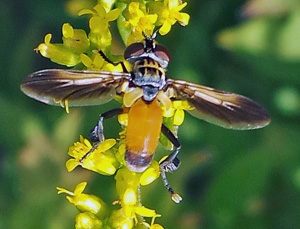
Trichopoda pennipes is a tachinid fly parasitoid of the squash bug and other members of the stink bug and leaffooted bug families, including brown and green stink bugs. It has a wide distribution in both North and South America. It and the other six species of Trichopoda in North America are sometimes referred to as the “feather-legged fly” because of the prominent fringe of feather-like bristles on its hind legs.
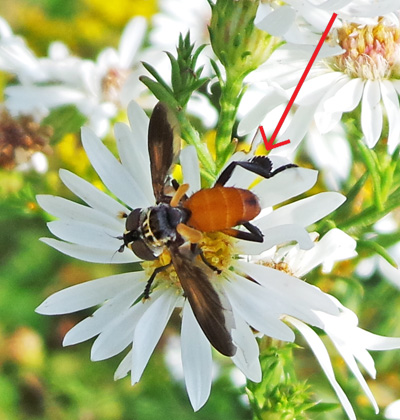
This distinctive and conspicuous fly is about the same size as a house fly but is bright orange with a velvety black head and thorax. It has dark legs with a fringe of short black hairs on the hind leg and yellow feet, large brown eyes and brown and black wings. The tip of the female fly’s abdomen is black.
The flies may be seen hovering over squash plants when searching for squash bugs to parasitize. Each female fly lays on average 100 eggs, which are placed singly on the body of a large nymph or adult bug.

Most of the small, white or gray, oval eggs are placed on the underside of the thorax or abdomen but they can occur on almost any part of the bug. Many eggs may be laid on the same host but only one larva will survive in each bug. The young larva that hatches from the egg bores directly into the host body. The maggot feeds on the body fluids of the host for about two weeks, during which time it increases to a size almost equal to that of the body cavity of its host. When it has completed its development, the cream-colored third instar maggot emerges from the bug between the posterior abdominal segments. The bug dies after emergence of the fly, not from the parasitoid feeding, but from the mechanical injury to its body. The maggot pupates about an inch down in the soil in a dark reddish-brown puparium formed from the last larval skin, and an adult fly emerges about two weeks later. There can be three generations per year depending on location.
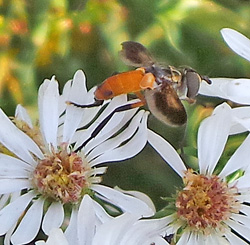
The fly overwinters as a second instar larva within the body of the overwintering host bug. Adult flies emerge in late spring or early summer. The only bugs large enough to parasitize at this time are overwintered adults. Subsequent generations develop on both nymphs and adults of the next generation.
Adult flies feed on nectar, especially from plants such as wild carrot (Queen Anne’s lace, Daucus carota) and meadowsweet (Spiraea salicifolia), and later in the year on asters (Symphotrichon spp.) and goldenrods (Solidago spp.).
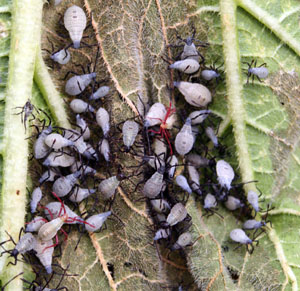
The rate of parasitism can be as high as up to 80% on squash bug and 93% on southern green stink bug. T. pennipes is highly attracted by an aggregation pheromone produced by male southern green stink bugs, which results in the males being parasitized at a consistently higher level than females. Because the bugs continue to feed after parasitization, T. pennipes will not always prevent crop damage. However, the reproductive organs of the host bug begin to atrophy when the parasitoid reaches the second instar, so pest population increase will be reduced somewhat.
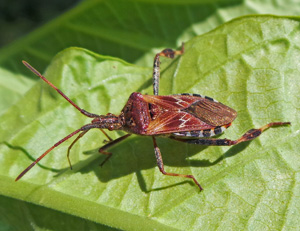
The fly is most effective when it parasitizes nymphs, since 50% die before becoming adults and the remainder that become adults and overwinter will die before laying eggs. The life history of the parasitoid and squash bug are not well synchronized, and host finding by the fly is not efficient, so T. pennipes is not able to maintain this pest at low densities.
– Susan Mahr, University of Wisconsin – Madison
Ask Your Gardening Question
If you’re unable to find the information you need, please submit your gardening question here:





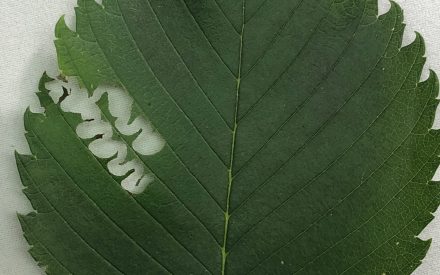 Elm Zigzag Sawfly
Elm Zigzag Sawfly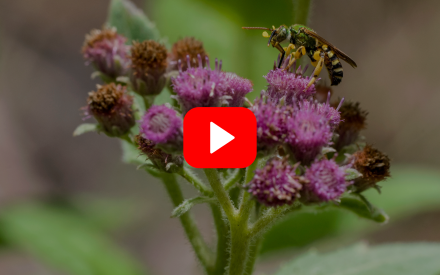 ▶ Watch: Pollinator Gardens: Plant Selection and Garden Care
▶ Watch: Pollinator Gardens: Plant Selection and Garden Care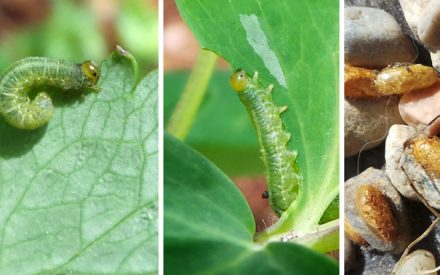 Strategies for Identifying and Managing Insect Pests
Strategies for Identifying and Managing Insect Pests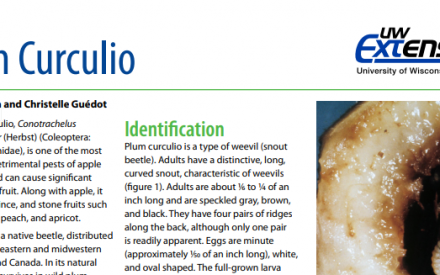 Plum Curculio
Plum Curculio


